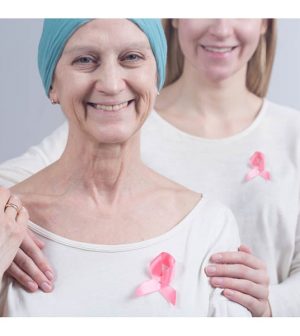- Navigating Your Midlife Crisis: Embracing New Possibilities
- City Raccoons Showing Signs of Domestication
- Mapping the Exposome: Science Broadens Focus to Environmental Disease Triggers
- One Week Less on Social Media Linked to Better Mental Health
- Your Brain Changes in Stages as You Age, Study Finds
- Some Suicide Victims Show No Typical Warning Signs, Study Finds
- ByHeart Formula Faces Lawsuits After Babies Sickened With Botulism
- Switch to Vegan Diet Could Cut Your Greenhouse Gas Emissions in Half
- Regular Bedtime Does Wonders for Blood Pressure
- Dining Alone Could Mean Worse Nutrition for Seniors
What’s Behind the Steady Decline in Breast Cancer Deaths?

Breast cancer deaths declined by a dramatic 58% between 1975 and 2019, and researchers think they can pinpoint the exact reasons for the reduction.
Advances in medical technology aided by routine breast cancer screening have helped save lives, researchers concluded in the Journal of the American Medical Association.
Three-quarters of the decline in breast cancer deaths is due to better treatment of early-stage and advanced cancers, with the remaining quarter due to routine screening, researchers found.
In particular, researchers found that about 29% of the reduction in breast cancer deaths is due to better treatment of advanced cancers that have spread to other parts of the body.
Although advanced breast cancers are not considered curable, women are living longer than ever thanks to improved medical care, researchers said.
They called this discovery particularly gratifying.
“Initially, we assumed that treatment of advanced disease was unlikely to make a significant contribution to the declines in [death rates] we documented in the previous two papers,” co-lead researcher Dr. Jennifer Caswell-Jin, an assistant professor of medicine at Stanford University, said in a news release.
“But our treatments have improved, and it’s clear that they are having a significant impact on [death rates],” she added.
The new study relied on a collaborative effort by a national consortium of researchers called the Cancer Intervention and Surveillance Modeling Network (CISNET).
Previously, CISNET researchers had estimated that screening mammography was responsible for as much as 65% of the reduction in breast cancer deaths between 1975 and 2000.
“Twenty years ago, there was a question whether routine screening mammography actually decreased the number of deaths from breast cancer,” co-senior researcher Sylvia Plevritis, chair of biomedical data science at Stanford University, said in a news release.
CISNET researchers later figured out that some types of early-stage breast cancer responded better to treatment, and thus also had an influence on the death rate.
“We found that, while screening still had an important impact, most of the decline in annual deaths was due to improvements in treating early-stage breast cancer based on each cancer’s molecular profile,” Plevritis said.
The current study was the first to explicitly include patients with advanced breast cancer in its models, researchers said.
The CISNET researchers used four computer models to assess federal health surveillance data from 1975 to 2019.
All four came up with remarkably similar estimates of the impact of screening mammography, treatment of early-stage breast cancer, and treatment of advanced breast cancer.
About 47% of the overall reduction is due to improved treatments for early-stage breast cancer, 29% to improved treatment of advanced breast cancers that have spread to other parts of the body, and 25% to screening mammography, researchers estimate.
The true impact of improvements in treating advanced breast cancer can be seen by increases in average survival time after the cancer has spread to other parts of the body, researchers said.
Patients diagnosed with advanced breast cancer in 2000 lived an average of 1.9 years, compared to an average 3.2 years for those diagnosed in 2019.
Survival time depends on the type of breast cancer, however:
-
Patients with estrogen receptor-positive and HER2 positive cancers saw an average increase in survival time of 2.5 years between 2000 and 2019.
-
Those with estrogen receptor-positive and HER2-negative cancers lived an average of 1.6 years longer.
-
Those with cancers that are estrogen receptor-negative and HER2-negative lived about 0.5 years longer.
“It was meaningful as a breast oncologist to spend time with this history and see real progress over the past decades,” Caswell-Jin said. “There is much more work to be done; metastatic breast cancer isn’t yet curable. But it is rewarding to see that advances have made a difference in these numbers.”
More information
The American Cancer Society has more about breast cancer.
SOURCE: Stanford University, news release, Jan. 18, 2024
Source: HealthDay
Copyright © 2025 HealthDay. All rights reserved.










